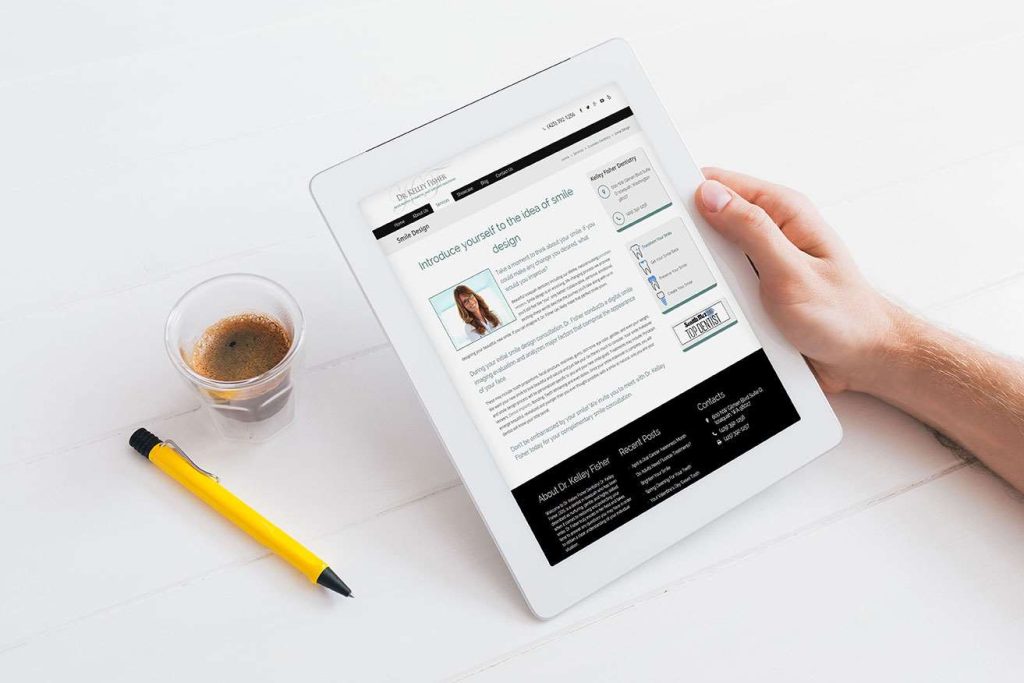From Scrolling to Clicking: How to Master the Art of Headlines
The SEO experts at Now Media Group know headlines are the gateway to effective content. They’re the first interaction a reader has with your article, blog post, or webpage, and they play a crucial role in determining whether someone will click through and engage with your content or simply scroll past it.
Headlines are more than just a summary of your content; they’re a powerful tool for capturing attention, sparking curiosity, and enticing readers to learn more. A well-crafted headline can be the difference between a piece of content that goes viral and one that gets lost in the vast sea of online information. For digital marketing strategies tailored to your business needs, call our San Diego, CA, office at (858) 333-8950.
The Psychology of Clickable Headlines
Creating clickable headlines requires an understanding of the psychological principles that drive human behavior and decision-making. Tapping into these psychological factors can help you craft headlines that are more compelling, attention-grabbing, and effective in driving clicks and engagement.
Triggering Curiosity and Creating a Knowledge Gap
Humans are inherently curious creatures, and we’re drawn to information that promises to fill a gap in our knowledge or understanding. Effective headlines tap into this curiosity by hinting at valuable insights or solutions without giving everything away. This creates a sense of curiosity and a desire to learn more, encouraging readers to click through to satisfy their thirst for knowledge.
Headlines that trigger curiosity often include mystery, surprise, or a tantalizing promise. For example, a headline like “The Unexpected Trick That Doubled My Instagram Engagement” piques curiosity by hinting at a novel solution without revealing the full details. This sense of intrigue and the promise of valuable information can motivate readers to engage with your content.
Appealing to Emotions and Addressing Pain Points
While logic and rational thinking certainly play a role in decision-making, people are driven by emotions. Headlines that evoke emotions like excitement, fear, or a sense of urgency can be highly effective in capturing attention and driving clicks. Similarly, headlines addressing common pain points or frustrations can resonate deeply with readers, tapping into their desires for solutions or relief from their challenges.
For instance, a headline like “Stop Wasting Time on Social Media: 5 Proven Productivity Hacks” taps into the pain point of procrastination and the desire for increased productivity. By acknowledging a common struggle and promising a solution, this headline creates an emotional connection with readers and increases the likelihood of clicks and engagement.
Using the Element of Surprise or Novelty
Our brains are wired to pay attention to things that are novel or unexpected. Headlines that incorporate an element of surprise or present a fresh perspective on a topic can be highly engaging and entice readers to learn more.
Headlines that challenge conventional wisdom or present contrarian viewpoints can be particularly effective in capturing attention. For example, a headline like “Why You Should Actually Eat More Chocolate (According to Science)” plays on the surprise factor by contradicting the common perception that chocolate is unhealthy.
By presenting information in an unexpected or novel way, these types of headlines create a sense of intrigue and curiosity, encouraging readers to click through to learn more about the surprising or unconventional perspectives being presented.
Crafting Effective Headlines
While there’s no one-size-fits-all formula for creating clickable headlines, there are some general principles and best practices to follow:
- Keep it concise and attention-grabbing: Headlines should be short, punchy, and concise. Aim for around 60 characters or less, as longer headlines may get truncated or lose impact on various devices and platforms.
- Use powerful words and active language: Incorporate strong, persuasive words that evoke emotion or a sense of urgency. Use active language and verbs to create a more dynamic and engaging headline.
- Incorporate numbers and data: Headlines including numbers or data points can be more compelling and lend a sense of authority and credibility to your content.
- Ask questions or make a promise: Posing a thought-provoking question or making a tantalizing promise in your headline can pique a reader’s curiosity and encourage them to click through for the answer or solution.
Types of Clickable Headlines
While there’s no one-size-fits-all formula for creating clickable headlines, certain headline styles and formulas have proven to be particularly effective in driving clicks and engagement. Understanding these different types of headlines can help you develop a diverse repertoire and adapt your approach based on the specific content and audience you’re targeting.
List-based Headlines
List-based headlines, such as “10 Ways to Boost Your Productivity” or “7 Surprising Facts About [Topic],” are a popular and effective style for several reasons. First, they promise a straightforward, easily digestible format that appeals to readers seeking quick, actionable information or bite-sized insights. Additionally, the inclusion of a specific number creates a sense of completeness and authority, suggesting the content will comprehensively cover the promised topic.
List-based headlines work well for a wide range of content types, including tips, tricks, facts, or step-by-step guides. They can be particularly effective for topics related to productivity, self-improvement, or practical advice, as readers are often drawn to clear, actionable steps they can implement.
How-to Headlines
How-to headlines, such as “How to Create a Viral Social Media Campaign” or “The Ultimate Guide to [Topic],” position your content as a comprehensive tutorial or step-by-step guide. These headlines appeal to readers actively seeking to learn a new skill, solve a problem, or accomplish a specific task.
By framing your content as a solution or a roadmap, how-to headlines tap into the desire for knowledge and self-improvement. They suggest your content will provide the necessary information and guidance to help readers achieve a desired outcome or master a particular subject.
How-to headlines work well for a wide range of topics, from marketing and business strategies to creative pursuits and personal development. They can be especially effective for evergreen content that addresses common challenges or goals within your target audience.
Negative Headlines
Negative headlines, such as “5 Mistakes That Are Killing Your Website Traffic” or “The Biggest Lies About [Topic] (And the Truth Behind Them),” tap into a sense of fear, urgency, or a desire to avoid pitfalls or negative consequences. These headlines often highlight common mistakes, misconceptions, or potential threats related to a particular topic.
By identifying and addressing these negative elements, negative headlines position your content as a solution or a source of valuable insights. They appeal to readers who want to avoid making costly mistakes or who are seeking to debunk myths or misinformation within their field or area of interest.
Negative headlines can be particularly effective for industries or topics prone to misinformation, myths, or commonly held misconceptions. They can also work well for content that addresses common pain points or challenges faced by your target audience.
Controversial or Provocative Headlines
While controversial or provocative headlines can be risky, they can also be highly effective in garnering attention and sparking discussion or debate around a particular topic. Headlines like “Why [Conventional Wisdom] is Wrong” or “The Harsh Truth About [Topic] That No One Wants to Admit” challenge widely held beliefs or conventional thinking, immediately capturing the reader’s attention.
These headlines work best when backed by well-researched and compelling content that provides a fresh perspective or new insights on a familiar topic. They can be particularly effective for thought-leadership content or opinion pieces that aim to challenge the status quo or encourage critical thinking.
However, you need to strike a balance between being provocative and sensationalistic. Controversial headlines should be used judiciously and backed by credible, well-reasoned arguments to maintain credibility and avoid alienating readers.
Cliffhanger Headlines
Cliffhanger headlines, such as “You’ll Never Believe What This CEO Did to Save His Company” or “The Secret Ingredient That Will Transform Your [Topic],” create a sense of curiosity or suspense by leaving the reader hanging and promising a surprising or intriguing revelation.
These headlines pique the reader’s interest and create a sense of intrigue or mystery around the content. They encourage readers to click through to uncover the promised secret, surprising story, or invaluable insight.
Cliffhanger headlines can be effective for a wide range of content types, from case studies and personal narratives to tips and advice articles. They work particularly well for content that promises to reveal lesser-known or counterintuitive information or strategies.
However, ensure the content delivers on the promise made by the cliffhanger headline. Failing to provide a satisfying payoff or resolution can lead to reader frustration and a loss of credibility.
Headline Best Practices
In addition to the principles and formulas mentioned above, there are several best practices to keep in mind when crafting clickable headlines:
- Conduct A/B testing: Test different headline variations to see which ones perform best in terms of click-through rates and engagement. This data-driven approach can help you refine your headline-writing skills over time.
- Align headlines with content: While headlines should be attention-grabbing, they should also accurately reflect the content they’re promoting. Misleading or clickbait headlines may drive initial clicks but can ultimately damage your credibility and reader trust.
- Optimize for search engines: While headlines should primarily be written for human readers, it’s also important to incorporate relevant keywords and phrases to help your content rank higher in search engine results.
- Consider the target audience: Tailor your headlines to the specific interests, pain points, and language of your target audience for maximum resonance and impact.
Tools and Resources for Creating Headlines
While headline writing is an art that takes practice and experimentation, there are several tools and resources available to help you in the process:
- Online headline analyzers: Tools like CoSchedule’s Headline Analyzer and AMInstitute’s Emotional Marketing Value Headline Analyzer can provide valuable feedback on the strength and emotional impact of your headlines.
- Headline templates and formulas: Resources like Jon Morrow’s Headline Hacks can provide inspiration and proven formulas for crafting compelling headlines.
- Headline brainstorming techniques: Methods like the Keyword Permutation technique, the Question technique, and the Piggyback technique can help you generate a wide range of headline ideas to test and refine.
Take Your Marketing to New Heights. Call Us!
Ready to elevate your digital marketing game? Contact Now Media Group today at (858) 333-8950 and let our digital marketing team craft compelling headlines that drive engagement and results for your business. Whether you’re aiming to boost clicks, increase conversions, or enhance brand visibility, we’re here to help you succeed in the competitive online landscape. Reach out now to get started on your journey to digital marketing excellence.



